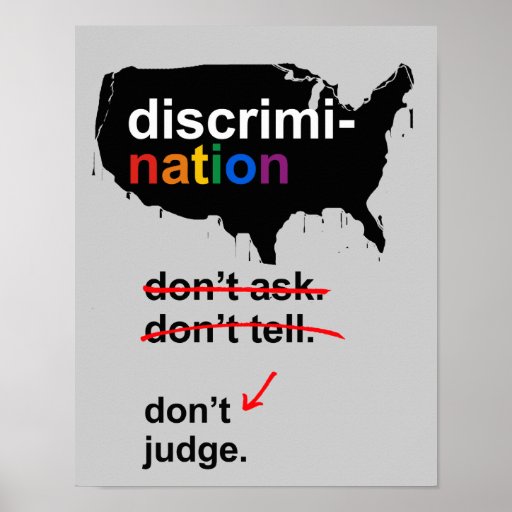>Putting the syllabus together for Latina/o Sexualities, a new course design for me, brought up a lot of questions and feelings in relation to what knowledge is available and how it represents Latina/o sexual identities, subjects, and practices. It was a process that was academic, creative, and personal. My thanks go out to those who provided me with feedback and suggestions. The quarter is painfully short, and there was so much great work I had to leave out.
I hope that what I have put together generates conversations among the class not only about the state of the field of Latina/o sexuality studies, but what its future might look like, there is still a lot of work to do…Prof Hernandez
/////////////////////////////////////////////////////
>>>REGULATING EROTICS: SEXUALITY & GOVERNMENTALITY
Thursday, April 3
Michelle Foucault, The History of Sexuality, Volume 1 (1978, Vintage Books)
Pages 1-74
Tuesday, April 8
Complete The History of Sexuality, Volume 1
Introduction, Ladelle McWhorter, from Bodies and Pleasures: Foucault and the Politics of Sexual Normalization (1999, Indiana University Press).
Thursday, April 10
Selections from Reproducing Empire: Race, Sex, Science, and U.S. Imperialism in Puerto Rico by Laura Briggs (2002, University of California Press)
Chapter 1: Sexuality, Medicine, and Imperialism: The International Traffic in Prostitution Policy
Chapter 5: The Politics of Sterilization, 1937-1974
Tuesday, April 15
“Introduction: Queering Migration and Citizenship” by Eithne Luibhéd from Queer Migrations: Sexuality, U.S. Citizenship, and Border Crossings, edited by Eithne Luibhéd and Lionel Cantú Jr. (2005, University of Minnesota Press), pages ix-xxi
“Queering Mariel: Mediating Cold War Foreign Policy and U.S. Citizenship among Cuba’s Homosexual Exile Community, 1978-1994” by Julio Capó Jr. 2010. Journal of American Ethnic History 29 (4): 78-106.
>>>COLONIAL & RACIAL DESIRES
Thursday, April 17
“Masturbation, Salvation, and Desire: Connecting Sexuality and Religiosity in Colonial Mexico,” by Zeb Tortorici. 2007. Journal of the History of Sexuality 16 (3): 355-372.
Tuesday, April 22
“Marquillas cigarreras cubanas: Nation and Desire in the 19th Century” by Alison Fraunhar. 2008. Hispanic Research Journal 9 (5): 458-478.
Thursday, April 24
“How to Date a Brown Girl, Black Girl, White Girl, or Halfie” by Junot Díaz from Drown (1996, Riverhead Books)
“Halfie” by Ana-Maurine Lara. 2009. Callaloo 32 (2): 414-420.
“White Girl” by Myriam Gurba from Dahlia Season: Stories and a Novella (2007, Manic D Press)
Tuesday, April 29
“(Re)collecting Pleasure with Young Black Women and Girls in the Vibrator Project”
Visiting speaker Anya Wallace, Ph.D. Student, Penn State University
–Begin reading Queer Latino Testimonio, Keith Haring, And Juanito Xtravaganza by Arnaldo Cruz-Malavé (2007, Palgrave Macmillan), pages 1-55
Thursday, May 1
Queer Latino Testimonio pages 57-119
“‘I look sexy—but sweet’: Notes on Mario and Maria Montez” by Roberto Ortiz
http://reframe.sussex.ac.uk/mediatico/2014/03/17/i-look-sexy-but-sweet-notes-on-mario-maria-montez/
>>>PERFORMING THE LATINA SLUT, EMBODYING KNOWLEDGE
Tuesday, May 6
Excerpt from Vanessa del Rio: Fifty Years of Slightly Slutty Behavior
(2010, Taschen)
“Being Fatty D: Size, Beauty, and Embodiment in the Adult Industry,” by April Flores from The Feminist Porn Book: The Politics of Producing Pleasure
(2013, The Feminist Press)
Thursday, May 8
“Confessions of a Latina Cyber-Slut” by Juana María Rodríguez in Queer Latinidad: Identity Practices, Discursive Spaces (2003, New York University Press)
Tuesday, May 13
Flaming Iguanas by Erika Lopez (1998, Simon & Schuster, pgs. 1-138)
Selections from Gloria Anzaldúa, Borderlands/La Frontera: The New Mestiza. 1987, San Francisco: Aunt Lute Books.
Thursday, May 15
Complete Flaming Iguanas
>>>FLUID DESIRES
Tuesday, May 20
“Tacit Subjects” by Carlos Decena. 2008. GLQ 14 (2-3): 339-359.
Thursday, May 22
In-class film screening, Mosquita y Mari (2012, directed by Aurora Guerrero)
>>>SEXUALITY AS CREATIVE PRACTICE
Tuesday, May 27
Introduction, “Performing Disidentifications” from Disidentifications: Queers of Color and the Performance of Politics by José Esteban Muñoz (1999, University of Minnesota Press)
“VIRUS.CIRCUS.MEM” by Micha Cárdenas and Elle Mehrmand from Speculative (Exhibition catalogue, Los Angeles Contemporary Exhibitions, 2008, Zach Blas and Christopher O’Leary) <possible visit by Micha Cárdenas>
Thursday, May 29
Luz Calvo 2004. “Art Comes for the Archbishop: The Semiotics of Contemporary Chicana Feminism and the Work of Alma Lopez”. Meridians 5 (1): 201-224.
Selected works by Sandra Cisneros, including “Guadalupe the Sex Goddess” in Goddess of the Americas: Writings on the Virgin of Guadalupe. Edited by Ana Castillo. New York: Riverhead Books, 1996.
Tuesday, June 3
Visiting speaker Alice Bag, renown LA-based, Chicana punk performer, will be discussing issues of Latina sexuality and performance
We will read selections from her memoir Violence Girl: From East L.A. Rage to Hollywood Stage, a Chicana Punk Story (2011, Feral House)
Thursday, June 5
“'Miss, You Look Like a Bratz Doll’: On Chonga Girls and Sexual-Aesthetic Excess” by Jillian Hernandez National Women’s Studies Association Journal 21 (3): 63-91. (2009)






